Info Centru
In fizica si domenii conexe
 Website
Website
|
Ministerul, Cercetării Inovării şi DigitalizăriiMinisterul, Cercetării Inovării şi Digitalizării (MCID) este organul de specialitate al administraţiei publice centrale, cu personalitate juridică, care se organizează şi funcţionează în subordinea Guvernului. MCID are rol de sinteză şi coordonare în aplicarea Strategiei şi Programului de guvernare în domeniul cercetării ştiinţifice, dezvoltării tehnologice şi inovării. Organizează şi conduce sistemul naţional de cercetare ştiinţifică, dezvoltare tehnologică şi inovare, exercitându-şi atribuţiile stabilite prin legi şi prin alte acte normative din sfera sa de activitate, şi realizează, după caz, împreună cu ministerele de resort politica guvernamentală în domeniile sale de activitate. MCID, ca organ de specialitate al administraţiei publice centrale, are drept de iniţiativă şi de execuţie în domeniul politicii financiare şi al resurselor umane din sfera cercetării ştiinţifice, dezvoltării tehnologice şi inovării. |
 Website
Website
|
Unitatea Executiva Pentru Finantarea Invatamantului Superior, A Cercetarii Dezvoltarii si InovariiUnitatea Executiva pentru Finantarea Invatamantului Superior, a Cercetarii, Dezvoltarii si Inovarii (UEFISCDI) este o institutie publica cu personalitate juridica aflata in subordinea Ministerului Educatiei si Cercetarii Stiintifice (MECS), iar functional consiliilor consultative ale MECS cu atributii in domeniul invatamantului superior, cercetarii stiintifice, dezvoltarii si inovarii. |
 Website
Website
|
Agentia Spatiala RomanaRomânia este cunoscută ca una dintre țările cu tradiție aerospațială și care posedă calitațile necesare pentru sprijinirea eforturilor în această direcție, pe parcursul timpului cercetătorii români contribuind la peste 30 de misiuni spațiale științifice și tehnologice. În anul 1968 s-a înființat Comisia Interministerială CRAS — „Comisia Română pentru Activităţi Spaţiale”, al cărei scop era de a coordona dezvoltarea activităţilor spațiale la nivel naţional. Formarea comisiei venea în contextul elaborării la nivel internațional a Programului Intercosmos în 1967, prin care mai multe țări s-au consultat în vederea stabilirii unor colaborări pentru explorarea spațiului cosmic. |
 Website
Website
|
INSTITUTUL NATIONAL DE CD PENTRU FIZICA SI INGINERIE NUCLEARA HORIA HULUBEIWith a contribution of almost 10% of the national scientific output, IFIN-HH is one of the most important public R&D organizations in Romania. The institute is dedicated to the research and development in physical and natural sciences, mainly Nuclear Physics and Nuclear Engineering, and in related areas including Astrophysics and Particle Physics, Field Theory, Mathematical and Computational Physics, Atomic Physics and Physics of Condensed Matter, Life and Environmental Physics. In all these fields, IFIN-HH conducts theoretical and experimental research. |
 Website
Website
|
INSTITUTUL NATIONAL PENTRU FIZICA LASERILOR, PLASMEI SI RADIATIEIThe National Institute for Laser, Plasma & Radiation Physics (INFLPR) is an independent, national importance research institution established by the Government of Romania. INFLPR was founded in 1977, with the mission to advance the knowledge in several strategic areas of the sciences and technologies related to laser, plasma, and radiation physics. In 1996 INFLPR was reorganized to include the Institute of Space Sciences (ISS). The institute employs 447 researchers and administrative staff to conduct frontier research ranging from basic photonic materials and high power lasers, nanomaterials and nanotechnologies, quantum dots and information technologies, plasma physics and X-ray microtomography to industrial photonics, biophotonics and plasma coatings. ISS branch conducts research on astrophysics, space engineering and gravitation. INFLPR is pursuing advanced scientific research funded by national and international agencies, private institutions and enterprises. |
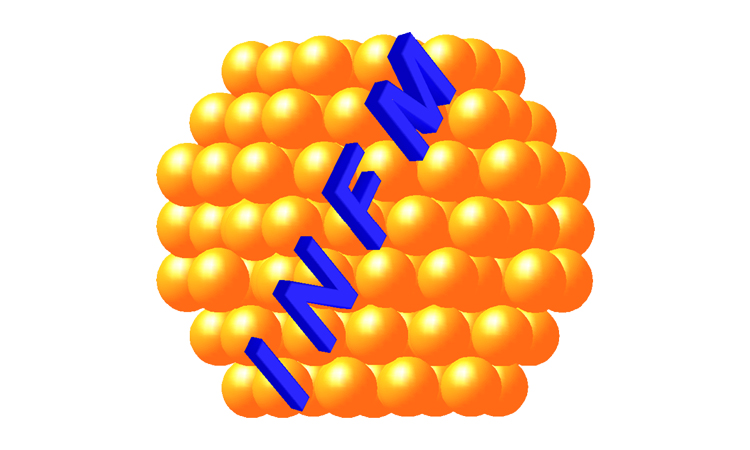 Website
Website
|
Institutul National de CD pentru Fizica MaterialelorThe National Institute for Materials Physics ( NIMP) Bucharest is devoted to fundamental and applied research and development, with particular emphasis in the fields of solid state physics and materials research. NIMP develops as a CENTER OF EXCELLENCE for international cooperation (R&D projects and networks with support for EU, bilateral agreements) and high-level education (PhD, MSc, training courses) and provides a frame for interdisciplinary research in the materials science. The institute management has tried deliberately to develop a balanced policy of basic and application-oriented research. Much effort was devoted to the applied research, devices and technologies based on new advanced materials. |
 Website
Website
|
INSTITUTUL NATIONAL DE CERCETARE-DEZVOLTARE PENTRU FIZICA PAMANTULUIIn February 1977 the Center for Earth’s Physics (CEP) was established, by joining the Seismological Department of the National Institute for Geology and Geophysics of Romania with the Geodynamics Laboratory of the Romanian Academy of Sciences. Following the 48 Decree from 12th February 1994, regarding the research activity in the field of Earth’s Physics, CEP has become The National Institute for Earth’s Physics (NIEP), and following the 1313 Decree of 25th of November 1996, this has become the National Institutue of Research and Development for Earth’s Physics (NIRDEP). At present, NIRDEP in under the coordination of the Nationa Education Ministry (since 2013). |
 Website
Website
|
INSTITUTUL DE ŞTIINŢE SPAŢIALEThe Institute of Space Science (ISS) from Magurele, Romania is carrying out fundamental and advanced technological research in Space Physics and related fields based on previously acquired experience, and international collaborations. The opportunity of participating in in situ space research missions, as well as in major ground based experiments has a major impact on the competence level of staff. The Institute’s R&D activity is based on the concept of covering, whenever possible, all experimental and theoretical stages: from equipment development, experiments in cosmic space, ground based, underground or undersea related projects, data processing and interpretation, theoretical studies, to space utilization and knowledge dissemination to the general public including educational actions. |
 Website
Website
|
Institutul Naţional de Cercetare-Dezvoltare pentru Tehnologii Izotopice şi Moleculare (ITIM Cluj-Napoca)INCDTIM is the only national institute for research and development in the northwestern region of Romania. Having facilities at European standards the institute offers a favorable environment for young people who aspire to a research career in mass spectrometry, chromatography and ion physics, physics of nano-structured systems, molecular and biomolecular physics and technology of stable isotopes. |
 Website
Website
|
Institutul Naţional de Cercetare-Dezvoltare pentru Tehnologii Criogenice şi Izotopice (ICSI Râmnicu Vâlcea)ICSI Rm. Valcea was founded in 1970 as the Uzina "G" Rm. Valcea, as an experimental industrial pilot plant. Research has been completed by pateting heavy water production technology and by its exploiting through design and construction of Heavy Water Plant ROMAG from Drobeta Turnu Severin. In 1991, the Uzina "G" was reorganized as the Institute of Cryogenics and Isotopic Separations, which, in 1996, it was accredited as component unit of the research and development system, of national interest. |
 Website
Website
|
Institutul Naţional de Cercetare-Dezvoltare pentru Fizică Tehnică (IFT Iaşi)The National Institute of Research and Development for Technical Physics (NIRDTP) belongs to the network of Romanian national institutes coordinated by the National Authority for Scientific Research and Innovation. NIRDTP conducts research, development and innovation activities in the field of materials with novel structures and properties, devices, apparatus and equipment based on such materials, new preparation methods and characterisation techniques and non-destructive evaluation, electrical and magnetic separation methods, special materials and devices with applications in engineering, medicine and biotechnology. |
 Website
Website
|
Institutul Naţional de Cercetare-Dezvoltare pentru Microtehnologie (IMT Bucureşti)The present organization originates in the Centre of Microtechnology (founded by University “Politehnica” of Bucharest, September 1991), then becoming the Institute for Microtechnologies (IMT) by a decision of the Romanian Government, in July 1993. To our knowledge it was the first institute with this profile from Central and Eastern Europe. In 2008, IMT celebrated 15 years of existence. The present National Institute for Research and Development in Microtechnologies -IMT Bucharest was set up at the end of 1996 from IMT merging with the former ICCE (Research Institute for Electronic Components, working in semiconductor electronics). IMT became visible at the national level, especially by coordinating various projects financed from the National Programme MATNANTECH (New Materials, Micro and Nanotechnologies) (2001-2006). Between 2003 and 2009 IMT was involved in approximately European 25 projects (FP6, FP7 and related). IMT houses a European Centre of Excellence financed by the EC (2008-2011) the first one after Romania became a EU member. |
 Website
Website
|
Institutul Naţional de Cercetare-Dezvoltare pentru Optoelectronică (INOE 2000)The National R&D Institute for Optoelectronics – INOE 2000 was established in 1996 by Governmental Decision – HG 1196/1996. The Institute develops fundamental and applicative research in optoelectronics, analytical chemistry and mechanical engineering, aligning itself to the vital scientific directions of the European Research Area. The Institute comprises six research departments, two certified test laboratories and two legal subsidiaries: the Institute of Analytical Instrumentation Research - ICIA (http://www.icia.ro) and the Hydraulics and Pneumatics Research Institute – IHP ( http://www.ihp.ro). The institute is located in Magurele Physics Platform, situated at 8 km South to Bucharest, while its subsidiaries are located in Bucharest (IHP) and in Cluj-Napoca (ICIA). An important effort is continuously dedicated for keeping up the cohesion in the research activity by creating and sustaining a regional knowledge network. |
 Website
Website
|
Universitatea din BucurestiThe University of Bucharest is a leading academic centre and a significant point of reference in society, and it adheres to the principles of academic integrity and critical thinking. The University is one the leading higher education institutions in Romania and South-East Europe by actively contributing through research and teaching to the development and use of knowledge. The University's main objective is to offer high-quality academic programmes and research facilities, and becoming a forefront of research and teaching. The University is an important academic institution part of a global intellectual community working towards protecting and reinforcing academic values, as well as towards promoting diversity and international collaboration. |
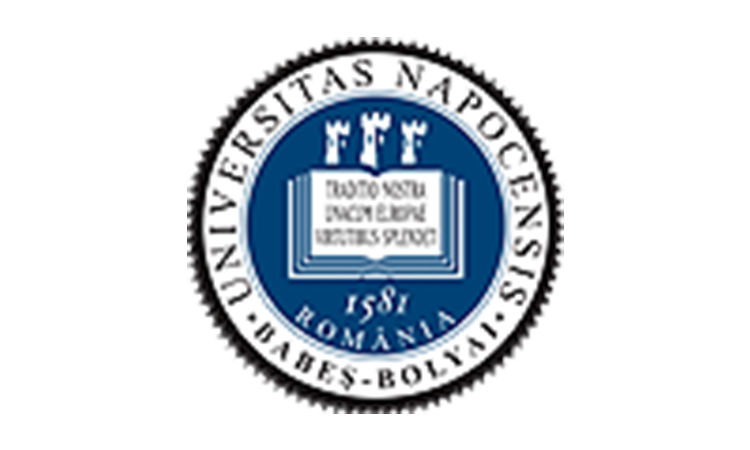 Website
Website
|
Universitatea Babes-BolyaiUniversitatea Clujului, care de fapt acum se întemeiază, poate fi scutită de la început de toate scăderile care s-au încuibat în cursul timpului, din tot felul de motive, la alte Universităţi mai vechi; ei trebuie să-i dăm toate posibilităţile de dezvoltare, spre a deveni un model de Universitate românească. |
 Website
Website
|
Universitatea Alexandru Ioan Cuza din IaşiAlexandru Ioan Cuza University of Iaşi is the oldest higher education institution in Romania. Since 1860, the university has been carrying on a tradition of excellence and innovation in the fields of education and research. With over 24.000 students and 800 academic staff, the university enjoys high prestige at national and international level and cooperates with 286 universities world-wide. Alexandru Ioan Cuza University is a member of some of the most important university networks and associations: the Coimbra Group, EUA – European University Association, Utrecht Network, International Association of Universities, University Agency of Francophony and the Network of Francophone Universities (RUFAC). These partnerships offer us the opportunity to experience changes, to have student and teacher mobilities and joint academic, research and strategy programmes. |
 Website
Website
|
Universitatea Alexandru Ioan Cuza din IaşiOver the last twelve years, the University has responded to changes in national educational policy, to demographic shifts, to a radically different economy and marketplace requirements, to emerging local and regional needs, and to new technologies. All of these changes have led, in turn, to new expectations on the part of students, staff, and administrators. The University equips individuals with skills needed for effective contribution to society. This work is currently done through eleven faculties that provide a wide range of undergraduate and graduate programs. The results reached in many programs involving international collaboration - particularly in mobility programs like Socrates, PHARE, Leonardo de Vinci, etc.—are indeed impressive and are among the best achievements of the University. |
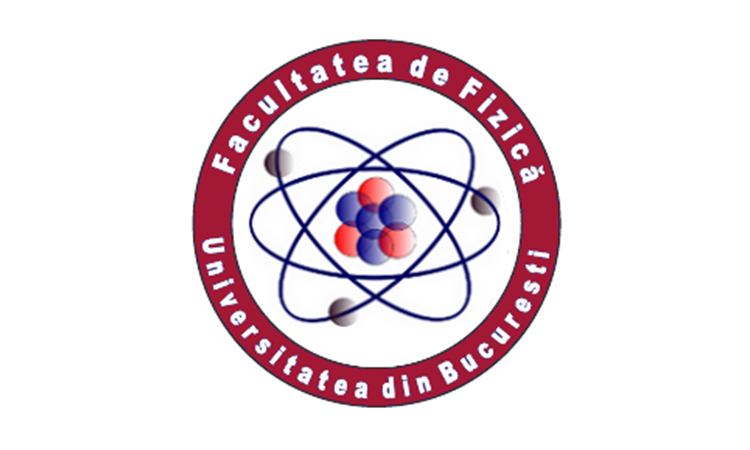 Website
Website
|
Facultatea de Fizica, Universitatea din BucurestiThe Faculty of Physics of the University of Bucharest is ranked first among similar faculties in Romania. Research is organised in three departments and six sub-departments: atmospheric and planetary physics; atomic and nuclear physics (including particle physics); condensed matter physics; biophysics; theoretical physics; lasers and photonics. The Faculty of Physics has well equipped teaching laboratories and a large library. It is located at Magurele, a small town 7 km south-west of Bucharest, the most important scientific and technological center in Romania. Students may arrange to do research projects in the laboratories of the four neighbouring national research institutes (National Institute for Materials Physics, "Horia Hulubei" National Institute of Physics and Nuclear Engineering, National Institute for Laser, Plasma and Radiation Physics and National Institute for Earth Physics). |
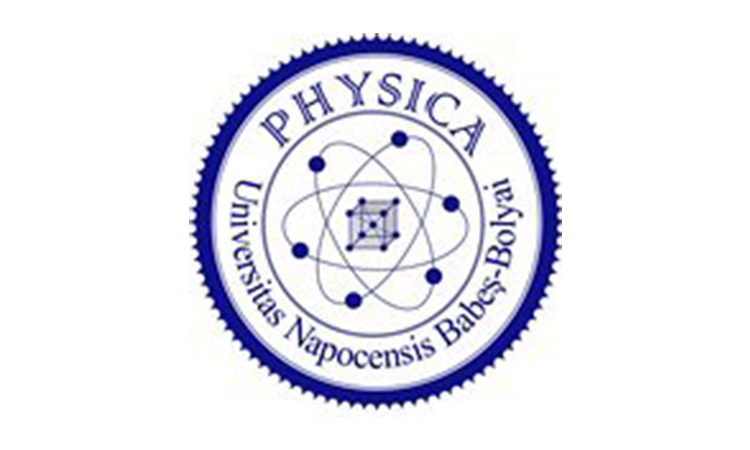 Website
Website
|
Facultatea de Fizica, Universitatea Babes-BolyaiFizică ȋnseamnă "natură" ȋn limba greacă şi pentru că descifrează tainele acestei lumi, de la quarci pȃnă la stele, rămȃne regina ştiinţelor. Facultatea de Fizică ȋşi propune să deschidă o nouă perspectivă asupra rolului fizicii şi al fizicianului ȋn lumea actuală. |
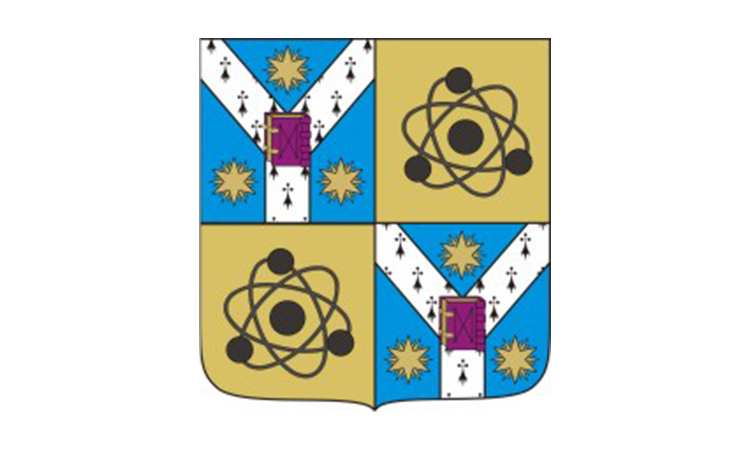 Website
Website
|
Facultate de Fizica, Universitatea Alexandru Ioan Cuza din IaşiPrin integrarea activităţii didactice cu cercetarea, inovarea şi transferul de cunoştinţe către societate, Facultatea de Fizică constituie una din componentele de avangardă ale Universităţii lexandru Ioan Cuza din Iaşi. În domeniul învăţământului, pe parcursul ciclului de licenţă, ea îşi asumă misiunea de a asigura tinerilor o solidă pregătire de bază în domeniul fizicii şi al ştiinţelor de graniţă - fizica medicală, biofizica, fizică-informatică -, precum şi al ingineriei fizice. Specializarea şi aprofundarea cunoştinţelor în domenii mai înguste se realizează pe parcursul ciclului de masterat. Aici se formează competenţele necesare pentru a urma cariere de succes în multiple domenii cerute de piaţa muncii. Specializările de masterat asigură, de asemenea, absolvenţilor pregătirea necesară pentru intrarea în ciclul de doctorat în domeniul ştiinţelor exacte - baza pentru o carieră în cercetare şi/sau în învăţământul superior. Această traiectorie a fost aleasă de un număr apreciabil de absolvenţi ai ultimilor ani, care lucrează acum în ţară sau în străinătate. Există, de asemenea, specializări de masterat care asigură o pregătire de înalt nivel pentru cariere în domeniul educaţional, al ştiinţei mediului, ca şi în domenii de interfaţă cu medicina. În plus, Facultatea oferă programe post-academice pentru pregătirea continuă a fizicienilor şi a altor specialişti din domenii înrudite. |
 Website
Website
|
Facultatea de Fizica, Universitatea de Vest din TimisoaraFacultatea de Fizica a luat fiinta, incepand cu anul universitar 1962/1963 cu o singura sectie, de Fizica-zi, cu durata studiilor de 5 ani si specializarea Electroradiofizica. O a doua sectie, si anume cea de Fizica- Chimie – zi de 4 ani, se infiinteaza incepand cu anul 1965/1966. Facultatea functioneaza cu aceasta structura pana in anul 1973. In acest an se reorganizeaza schema intregii Universitati, prin comprimarea unor sectii si facultati. Cu aceasta ocazie Facultatea de Fizica este inglobata in nou creata Facultatea de Stiinte ale Naturii (alaturi de sectiile de Matematica si Informatica) iar sectia de Fizica-Chimie este desfiintata (sectia Fizica functioneaza si cu Forma de invatamant seral). In 1990 Facultatea de Fizica se desprinde de Facultatea de Stiinte ale Naturii cu sectiile vechi, de Fizica-zi si Fizica-seral, si devine cadrul in care se reinfiinteaza, in 1991, sectia de Fizica-Chimie. |
 |
WEBSITE |
Proiect realizat de Institutul de Fizica Atomica in parteneriat cu 16 institutii de cercetare si invatamant superior din Romania in perioada 01.09.2009-31.08.2011. |
The International Nuclear Information System (INIS) hosts one of the world's largest collections of published information on the peaceful uses of nuclear science and technology. It offers online access to a unique repository of non-conventional literature. INIS is operated by the IAEA in collaboration with over 150 members.
 Website
Website
|
Magurele High Tech ClusterMagurele High Tech Cluster Project is a prerequisite for opportunities created by the ELI project – NP is not wasted due to undeveloped fast enough and sustainable private sector and lack of resources for successfully positioning cluster entities components, product / service innovation generated international markets. Entities cluster states decided to focus to capitalize on scientific research conducted at Magurele Physics Platform and, in particular, the project Extreme Light Infrastructure – Nuclear Physics. This specialization will allow innovative SMEs members of the association to be able to find a niche in the domestic, European and international. |
CLARA = THE EU CENTER OF EXCELLENCE IN LASERS AND RADIATIONThe CLARA Project is referring to a Key Enabling Technologies (KET) - type cluster with Multi - Smart Specialisation profile, to be established in Bucharest on Magurele Platform. Romania have the incontestable right to obtain, to be nominated & to implement this project - due to its scientific capabilities based on professional and human values of Magurele NIRD’s researchers and the level of technological investments on Magurele Platform - primarily ELI-NP and CETAL already there. |
